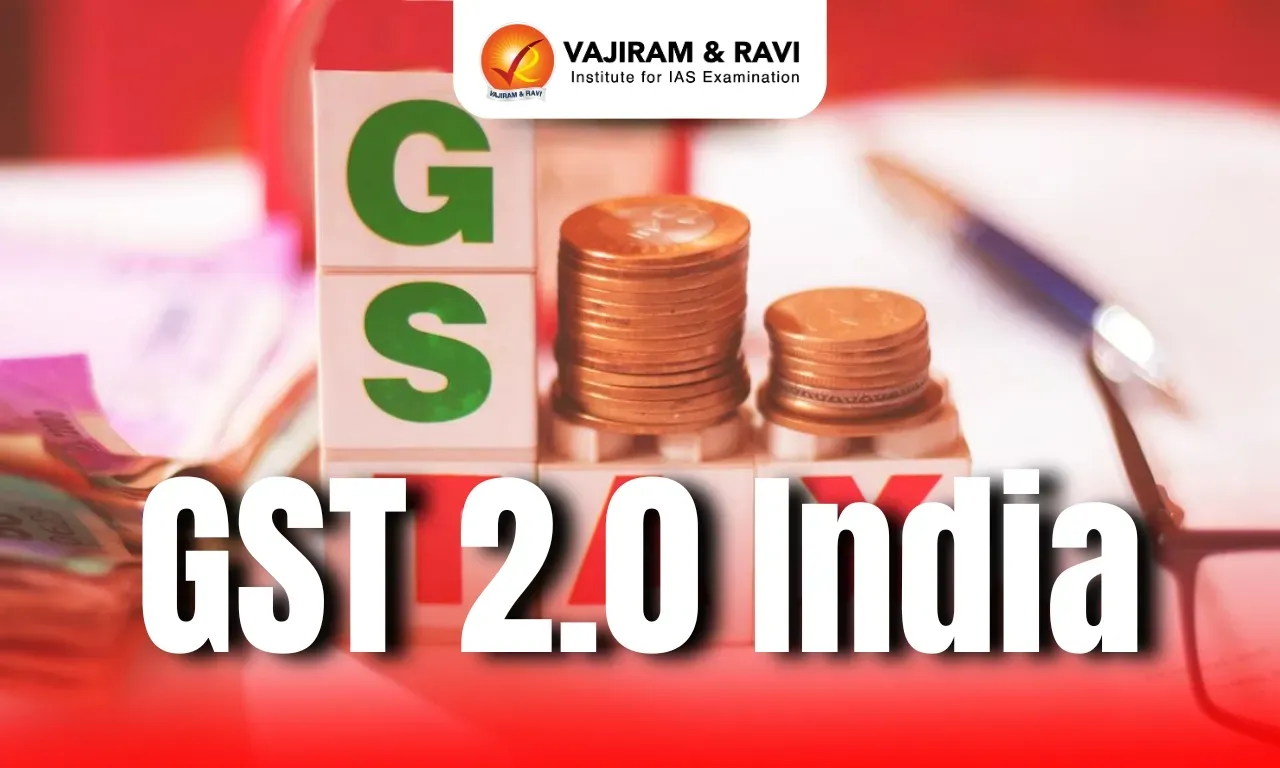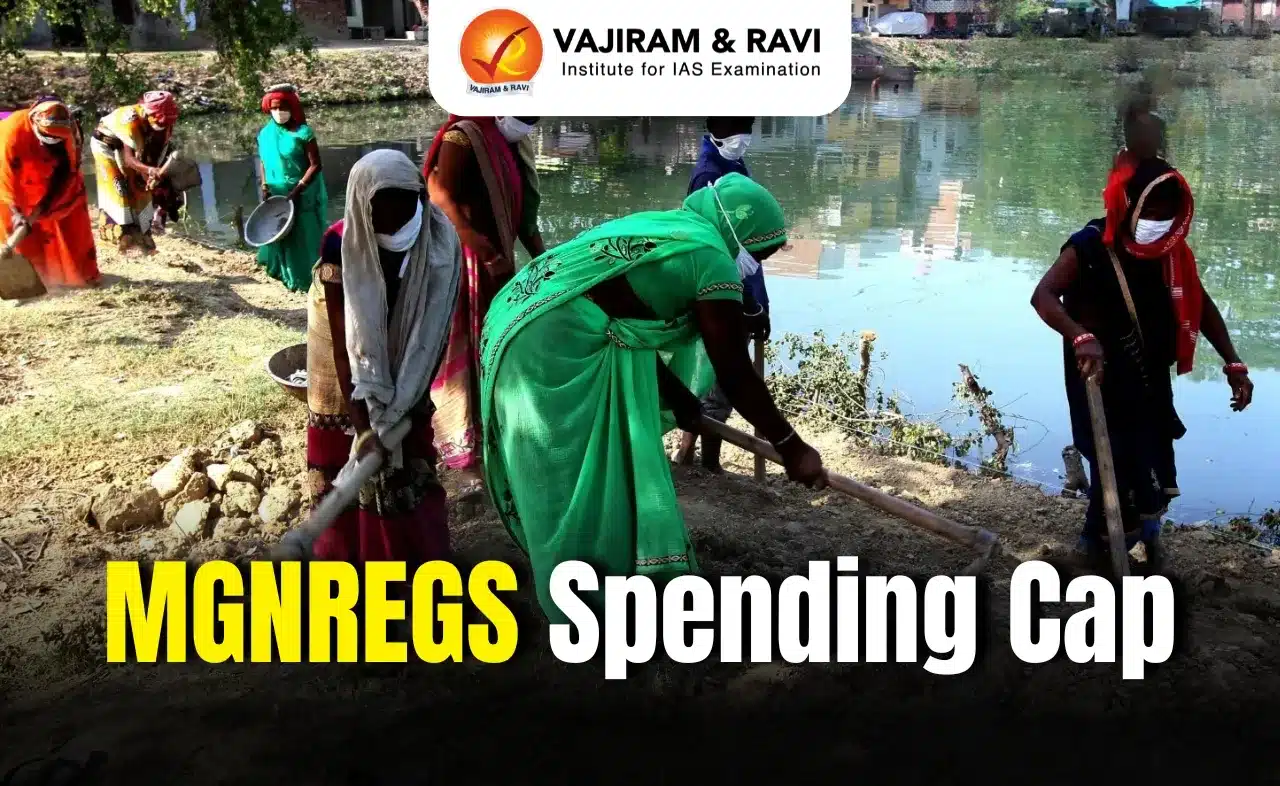What’s in Today’s Article?
- Goods and Services Tax Latest News
- Background
- Compensation to States Remains a Key Concern
- Compliance Complexities and Technical Glitches
- Delays in Refunds and Their Economic Impact
- Need for Institutional Reforms
- Way Forward: Recommendations for GST 2.0
- Conclusion
- GST 2.0 and PAC Observations FAQs
Goods and Services Tax Latest News
- In a report to Parliament, its Public Accounts Committee (PAC) has sought a comprehensive review of the Goods and Services Tax (GST) framework.
Background
- India’s Goods and Services Tax (GST), introduced in 2017, was envisioned as a game-changer to unify India’s fragmented indirect tax system.
- However, nearly eight years later, a Parliamentary report has highlighted deep-rooted issues in GST implementation that impact businesses, State finances, and the overall efficiency of the tax system.
- The Public Accounts Committee (PAC), in its latest report to Parliament, has called for a comprehensive overhaul of the GST system, a “GST 2.0”, to reduce complexity, improve transparency, and enhance ease of compliance.
Compensation to States Remains a Key Concern
- One of the biggest concerns flagged by the PAC is the lack of transparency and audit in the disbursal of GST compensation to States.
- The Comptroller and Auditor General (CAG) has not audited the GST Compensation Fund for over six years, reportedly due to the non-submission of proper financial data by the Ministry of Finance.
- This has hampered the release of compensation amounts to several States that heavily rely on these funds, especially industrial States like Tamil Nadu and Karnataka, which feared revenue loss under GST.
- Further, a review of 10,667 cases showed 2,447 inconsistencies, and around ₹32,577 crore remains pending, underscoring the urgency for better fund management and auditing mechanisms.
Compliance Complexities and Technical Glitches
- The PAC noted that several procedural inefficiencies continue to plague GST compliance, leading to either delayed revenue inflow to the government or cash flow constraints for businesses.
- Key issues include:
- Confusion over tax jurisdictions delaying refund.
- Unjustified cancellation of GST registrations: Of 14,998 cases studied, show-cause notices were not issued in 6,353 instances, violating legal norms
- Registration challenges: Taxpayers are not allowed to withdraw or modify applications, and in some cases, registrations were rejected without clear reasons
- Delays in Input Tax Credit (ITC) refunds, affecting MSMEs and exporters who rely on regular cash flows
- The Ministry claimed that some processes have been automated, but the Committee expressed concern over the lack of robust documentation and limited manual oversight, questioning the effectiveness of the automated systems.
Delays in Refunds and Their Economic Impact
- The report specifically emphasised the inadequacy of the refund mechanism, with businesses experiencing long waiting periods, affecting working capital and daily operations, especially for Micro, Small, and Medium Enterprises (MSMEs) and exporters.
- The Finance Ministry responded by promising improvements, including clearer timelines for refund processing and more real-time updates on the status of refund applications.
- The upcoming ‘Antarang Portal’ is expected to centralise filing, tracking, and documentation to enhance transparency.
Need for Institutional Reforms
- The report also highlighted the absence of a functional GST Appellate Tribunal, causing legal bottlenecks and prolonged pendency in dispute resolution.
- As of March 2022, over 19,730 cases involving tax implications of ₹1.45 lakh crore were pending investigation.
- Legal experts argue that these unresolved cases, many of which have been pending for more than two years, hamper both compliance and business confidence.
Way Forward: Recommendations for GST 2.0
- The Public Accounts Committee has recommended the government undertake a comprehensive stakeholder consultation to roll out GST 2.0, focusing on:
- Simplifying compliance by removing unnecessary procedures
- Ensuring timely audits and release of compensation to States
- Establishing the long-awaited GST Appellate Tribunal
- Improving digital platforms for registration, refunds, and returns
- Prioritising ITC refund processing, especially for MSMEs and exporters
- A tiered approach could be explored to allow differentiated compliance requirements for large corporates, mid-sized firms, and small traders to make the system more inclusive.
Conclusion
- GST was introduced as India’s biggest indirect tax reform, but implementation gaps and systemic inefficiencies have created avoidable hurdles for businesses and State governments alike.
- While digital initiatives like the Antarang Portal and automation of notices are steps in the right direction, only a comprehensive revamp backed by regular audits, robust grievance redressal, and stakeholder consultation can unlock GST’s true potential.
GST 2.0 and PAC Observations FAQs
Q1. What is GST 2.0?
Ans. GST 2.0 is a proposed overhaul of the current GST framework to simplify compliance and improve efficiency.
Q2. Why is the GST Compensation Fund under scrutiny?
Ans. The fund has not been audited for over six years, affecting timely compensation to States.
Q3. What problems do businesses face with GST?
Ans. They face delays in refunds, issues with registration, and unjustified cancellation of GST numbers.
Q4. Who is most affected by GST inefficiencies?
Ans. MSMEs and exporters are particularly affected due to refund delays and complex documentation.
Q5. What reforms has the PAC recommended?
Ans. The PAC has called for GST 2.0 with simplified procedures, timely audits, better digital tools, and quicker dispute resolution mechanisms.
Source: TH
Last updated on June, 2025
→ UPSC Notification 2025 was released on 22nd January 2025.
→ UPSC Prelims Result 2025 is out now for the CSE held on 25 May 2025.
→ UPSC Prelims Question Paper 2025 and Unofficial Prelims Answer Key 2025 are available now.
→ UPSC Calendar 2026 is released on 15th May, 2025.
→ The UPSC Vacancy 2025 were released 1129, out of which 979 were for UPSC CSE and remaining 150 are for UPSC IFoS.
→ UPSC Mains 2025 will be conducted on 22nd August 2025.
→ UPSC Prelims 2026 will be conducted on 24th May, 2026 & UPSC Mains 2026 will be conducted on 21st August 2026.
→ The UPSC Selection Process is of 3 stages-Prelims, Mains and Interview.
→ UPSC Result 2024 is released with latest UPSC Marksheet 2024. Check Now!
→ UPSC Toppers List 2024 is released now. Shakti Dubey is UPSC AIR 1 2024 Topper.
→ Also check Best IAS Coaching in Delhi





















